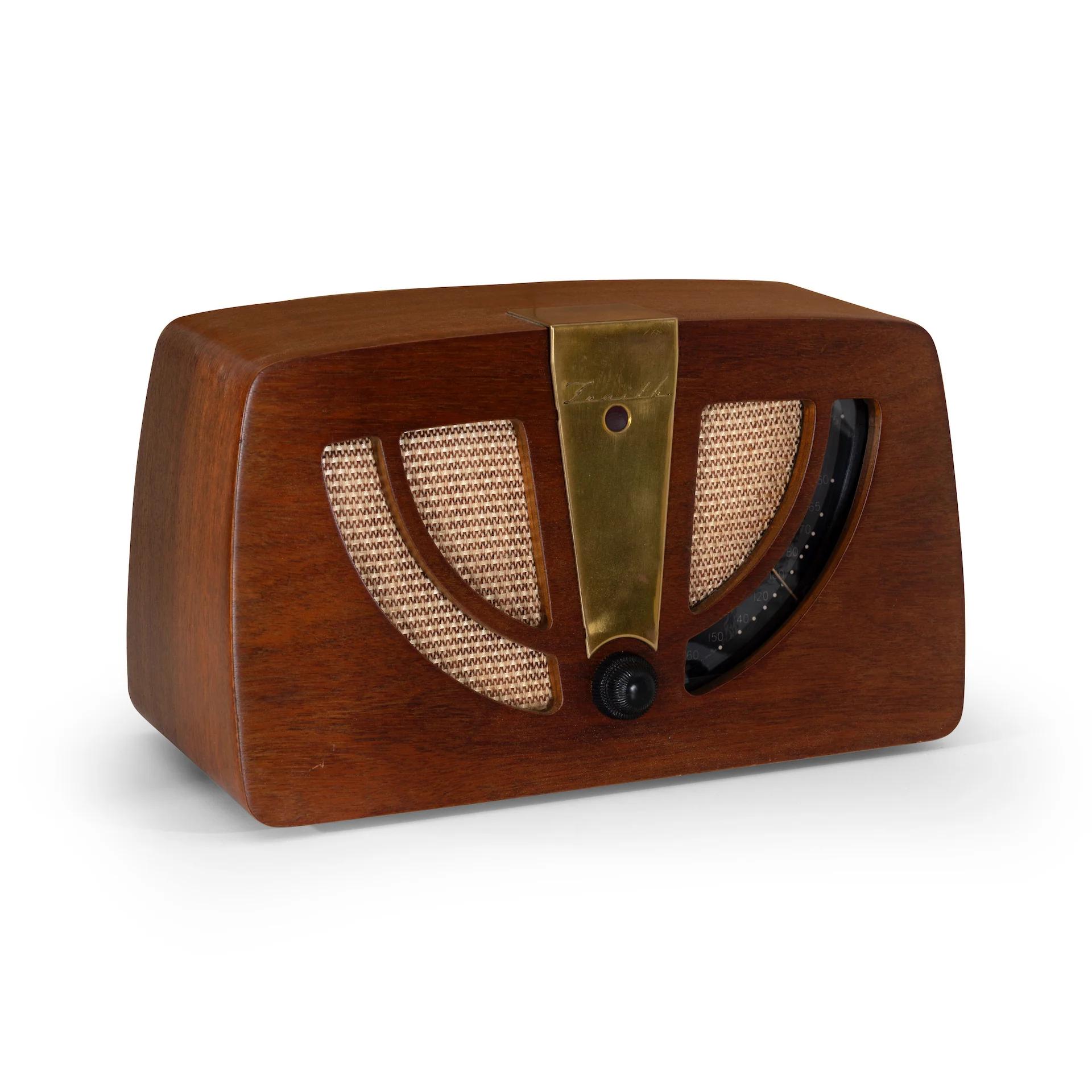MASTERPIECES JANUARY 24 2023
by Design Miami
The sculptural genius of 20th-century Brazilian designer Joaquim Tenreiro

JOAQUIM TENREIRO/ CADEIRA DE TRÊS PÉS, C. 1947
Photo © Joe Kram for R & Company
In the 20th century, Joaquim Tenreiro carved out a new path for Brazilian furniture, both literally and figuratively. Fusing the simplicity that defined European modernism with the natural beauty of tropical woods, the Portuguese-born, Brazilian-émigré designer and woodworker developed a new visual vocabulary that has come to define Brazilian modern aesthetics. His training as both an artist and master craftsman led him to his singular, sculptural approach.
“Joaquim Tenreiro was in a league of his own,” says Zesty Meyers, co-founder of New York design gallery R & Company. “He was one of the all-time best at pushing material to its limit.”
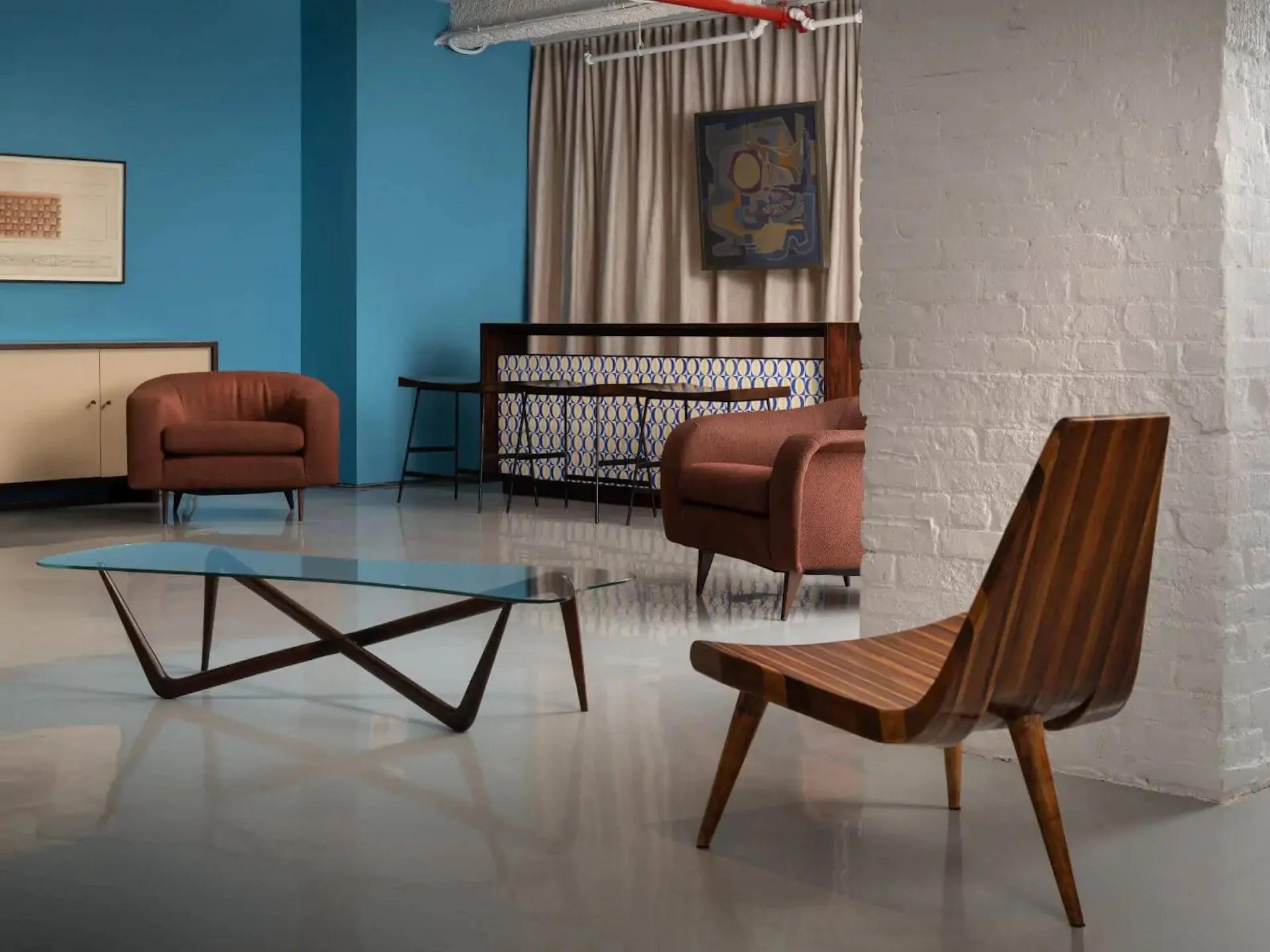
EXHIBITION VIEW OF JOAQUIM TENREIRO: TECTONIC MASTER AT R & COMPANY IN NEW YORK LAST FALL
Photo © Joe Kramm for R & Company
Last fall, Tenreiro was the star of a major exhibition at R & Company’s Manhattan space, where, alongside archival photographs, design schematics., and other ephemera, the gallery presented a collection of Tenreiro classics and rarities—like the Cadeira de Três Pés (Three-Legged Chair), which Tenreiro design in 1947 as a riff on the plush slipper chair of the Art Deco era, reinvented in stripes of curved, multi-colored wood.
“A lot of what makes Tenreiro’s work so exceptional cannot be captured on camera,” says Meyers, citing the perfect curvature of a backrest that reads head-on as a straight line or a seemingly flat plane that’s actually beveled on four sides.
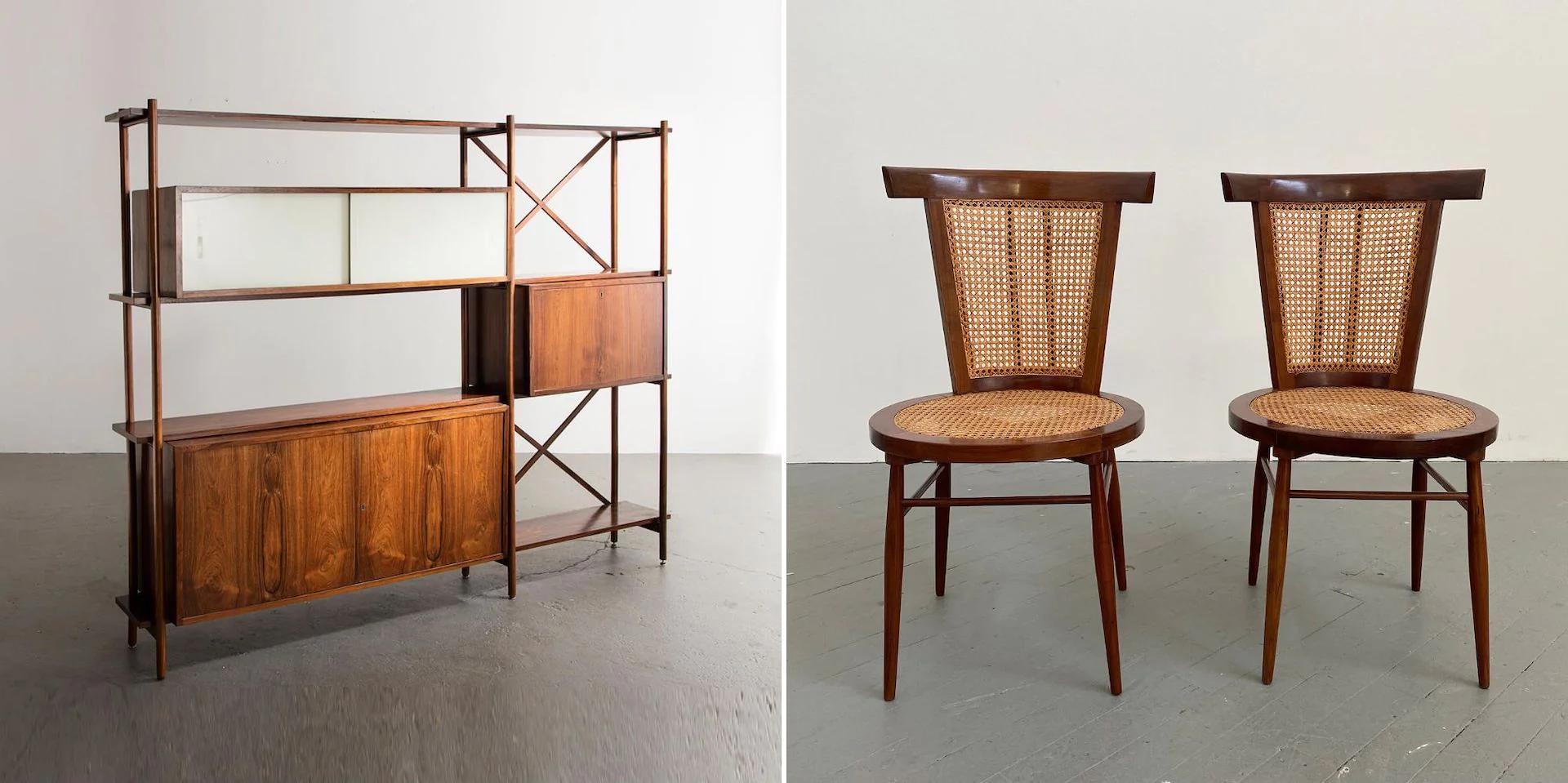
JOAQUIM TENREIRO/ BOOKSHELF, 1954 | CHAIRS, 1960
Photos © Joe Kramm and Katharine Suarez for R & Company
Tenreiro, who came from a family of carpenters, only lightly stained his woods so that the beauty of the grain patterns would remain. Says Meyers, “He would cut wood on much more difficult angles that used more material, just to create a sexier curve. It seems simple, but it takes time.”
Born in Portugal in 1906, Tenreiro began traveling to Brazil as a child and immigrated permanently in his early twenties. He studied fine art in Rio de Janeiro before returning to his love of woodworking, starting early on as a draftsman for the company Laubisch Hirth, a specialist in gothic and Louis XVI reproductions—styles that were then popular among Brazil’s wealthy families—typically heavy, ornately carved, and finished with thick layers of varnish.
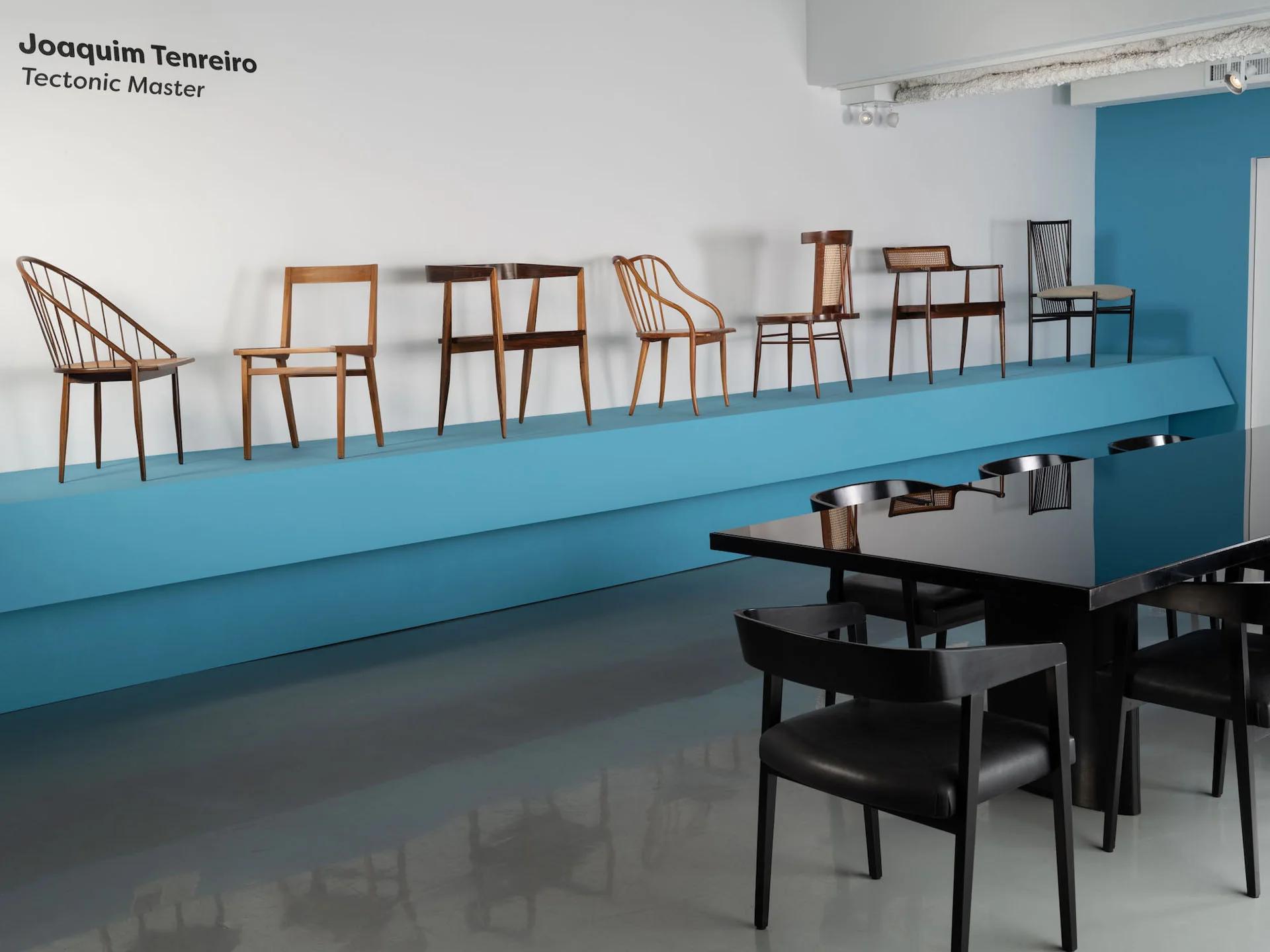
EXHIBITION VIEW OF JOAQUIM TENREIRO: TECTONIC MASTER AT R & COMPANY IN NEW YORK LAST FALL
Photo © Joe Kramm for R & Company
The designer’s big break came in the early 1940s when the writer Francisco Inácio Peixoto came to Laubisch Hirth seeking furniture for his new Oscar Niemeyer-designed house. Tenreiro’s work matched the architect’s lightness and rhythm, and Niemeyer ultimately became one of his biggest clients.
The biggest names in Brazilian modernism follow in Tenreiro’s legacy: Sergio Rodrigues, Jorge Zalszupin, and Lina Bo Bardi, among many others. In the 1960s, Tenreiro gave up design to return to painting, his other great love, and died in São Paulo in 1992.
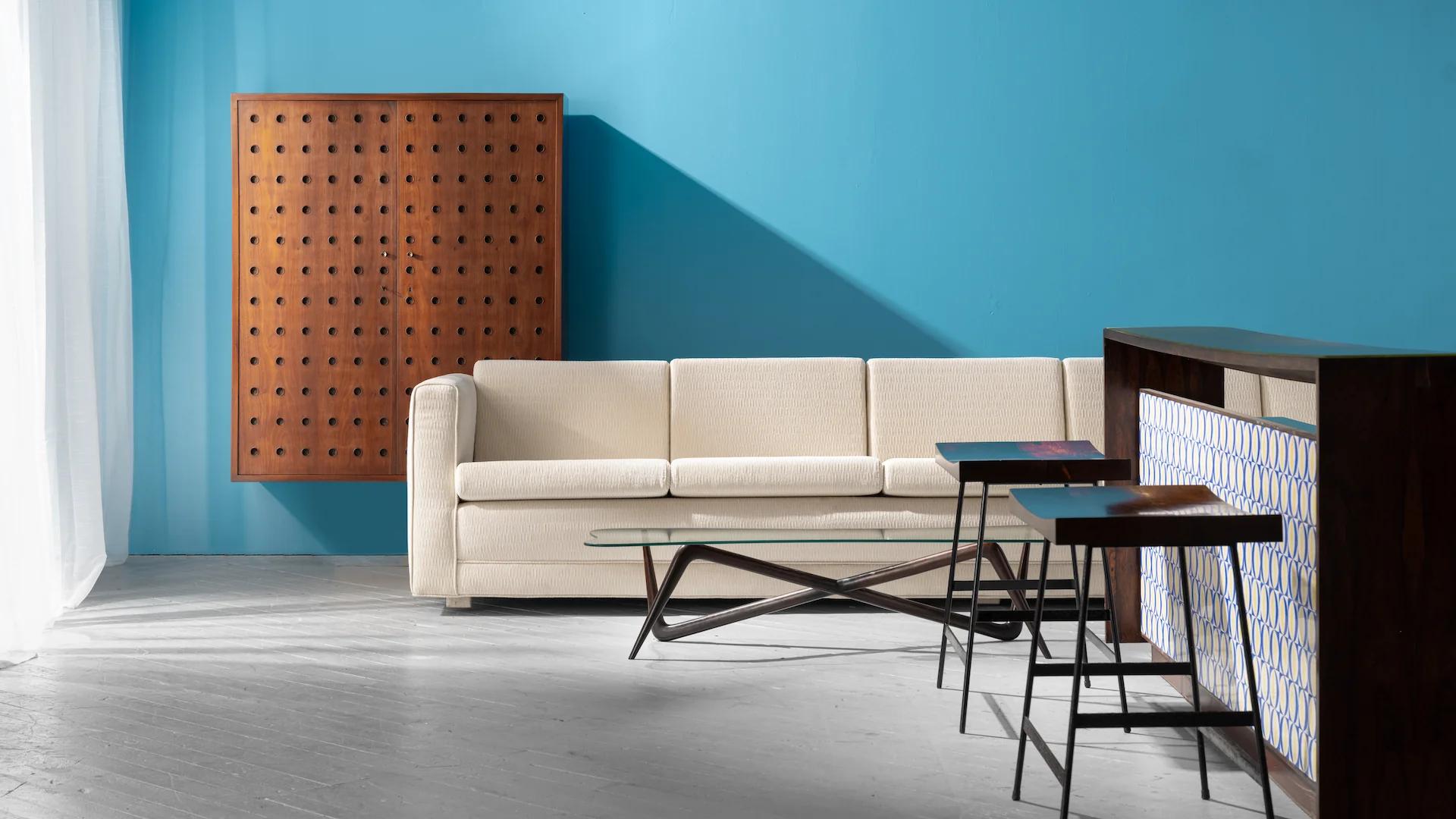
EXHIBITION VIEW OF JOAQUIM TENREIRO: TECTONIC MASTER AT R & COMPANY IN NEW YORK LAST FALL
Photo © Joe Kramm for R & Company
With the passage of time, Tenreiro pieces have become increasingly rare as he worked closely with individuals and their families, and, akin to couture garments, his pieces were both handmade and bespoke. In fact, as his works have been passed down from generation to generation, Meyers’ challenge as a dealer has been finding current owners who are willing to part ways with them. “My dream is that their sons and daughters won’t like them,” he says. “Otherwise, there’s no way we’re getting it.” ◆
This story is excerpted from The Brazilian Way written by Janelle Zara for Design District Magazine, Issue 2, 2022.

